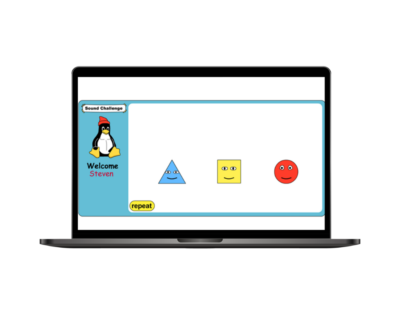Back to School Reading
As the summer sun begins to fade and the excitement of a new school year approaches, parents, educators, and students prepare for the annual tradition of “back to school.” This time of year brings with it a mixture of emotions—excitement for new beginnings, anticipation of reuniting with friends, and, for some, the anxiety of facing academic challenges. Among the subjects that students will encounter, reading remains one of the most fundamental and crucial skills for success. At Let’s Go Learn, we understand the importance of back-to-school reading and the pivotal role it plays in shaping a student’s educational journey.
In this blog, we will dive into the significance of reading as students head back to school, explore how Let’s Go Learn’s diagnostic tools can make a difference, and offer tips for parents and educators to support students in developing their reading skills.
The Importance of Reading in the Back-to-School Transition
Reading is more than just a subject; it is the foundation of learning across all disciplines. As students transition back to school, strong reading skills can significantly impact their ability to comprehend and excel in other subjects such as math, science, and social studies. Reading fluency and comprehension enable students to follow instructions, understand complex concepts, and engage critically with the material.
However, not all students return to school with the same level of reading proficiency. Summer learning loss, commonly referred to as the “summer slide,” can cause students to fall behind, particularly in reading. Research indicates that students can lose up to two months of reading skills during the summer break if they are not engaged in regular reading activities. For students who were already struggling before the summer, this loss can be even more pronounced, setting them back further as they enter the new school year.
Addressing Summer Learning Loss with Personalized Diagnostics
Understanding where a student stands in their reading journey is the first step in providing effective support. Let’s Go Learn’s comprehensive diagnostic assessments are designed to pinpoint a student’s strengths and weaknesses in reading, offering educators and parents a detailed roadmap for personalized instruction.
The Let’s Go Learn diagnostic tools assess various aspects of reading, including phonemic awareness, phonics, fluency, vocabulary, and comprehension. By using our tools, educators can quickly identify students who may have experienced summer learning loss and those who need targeted intervention. This data-driven approach ensures that every student receives the support they need to catch up and thrive in the new school year.

The Role of Data in Supporting Back-to-School Reading
Data-driven instruction is no longer a buzzword—it’s a necessity in modern education. The ability to harness data to inform teaching practices can make a world of difference in student outcomes, particularly in reading. At Let’s Go Learn, we provide educators with real-time data that allows them to monitor student progress, adjust instruction as needed, and celebrate improvements.
One of the key features of our diagnostic tools is the ability to generate individualized learning plans based on each student’s assessment results. These plans provide specific recommendations for instruction, whether a student needs help with decoding skills, vocabulary development, or reading comprehension strategies. By tailoring instruction to meet the unique needs of each student, educators can foster a more inclusive and supportive learning environment.
Supporting Diverse Learners in Back-to-School Reading
The classroom is a microcosm of society, filled with students from diverse backgrounds, each with their own learning styles, strengths, and challenges. Recognizing and addressing these differences is crucial in supporting back-to-school reading.
Let’s Go Learn is committed to equity in education, ensuring that all students, regardless of their background or learning needs, have access to high-quality reading instruction. Our diagnostic tools are designed to be culturally responsive, taking into account the diverse experiences and knowledge that students bring to the classroom. This approach not only helps in identifying gaps in reading skills but also in understanding the context behind those gaps.
For English Language Learners (ELLs) our assessments consider the unique challenges they face in mastering reading in a new language. By providing data on their specific needs, educators can implement targeted strategies to support language development alongside reading skills.
Tips for Parents to Encourage Back-to-School Reading
Parents play a vital role in their children’s reading development, and the back-to-school season is the perfect time to reinforce the importance of reading at home. Here are some tips for parents to encourage a love for reading:
- Create a Reading Routine: Establish a daily reading routine where your child spends at least 20 minutes reading. This can be a combination of independent reading, reading aloud, or listening to audiobooks.
- Set Up a Reading Nook: Create a cozy and inviting reading space in your home where your child can enjoy books. Having a dedicated space for reading can make it more enjoyable and special.
- Choose Books of Interest: Allow your child to choose books that interest them. Whether it’s fiction, non-fiction, graphic novels, or magazines, reading materials that capture their interest will motivate them to read more.
- Discuss What They Read: Engage in conversations about the books your child is reading. Ask open-ended questions about the story, characters, and themes to encourage deeper thinking and comprehension.
- Lead by Example: Be a reading role model for your child. Let them see you reading regularly, and share your reading experiences with them. This demonstrates that reading is a valuable and enjoyable activity.
- Use Technology: Leverage educational technology tools, such as Let’s Go Learn’s reading assessments, to support your child’s reading development. These tools can provide insights into their progress and offer personalized recommendations.
How Educators Can Support Back-to-School Reading
Educators are on the front lines of supporting students as they return to school, and their role in fostering reading development is critical. Here are some strategies educators can use to support back-to-school reading:
- Assess Early and Often: Use diagnostic assessments at the start of the school year to identify students’ reading levels and areas of need. Regular assessments throughout the year can help monitor progress and adjust instruction as needed.
- Differentiate Instruction: Recognize that students come to the classroom with varying levels of reading proficiency. Differentiate instruction by providing tiered reading materials, small group instruction, and individualized learning plans.
- Incorporate Diverse Texts: Use a wide range of texts that reflect the diverse experiences and cultures of your students. This not only promotes inclusivity but also helps students see themselves in the literature they read.
- Foster a Reading Community: Create a classroom culture that celebrates reading. Encourage book talks, reading challenges, and peer recommendations to build a community of readers.
- Provide Scaffolding: For students who struggle with reading, provide techniques such as graphic organizers, guided reading, and vocabulary support. These strategies can help bridge the gap between where students are and where they need to be.
- Collaborate with Parents: Maintain open communication with parents about their child’s reading progress. Share tips and resources to help them support reading at home.
The Future of Reading in Education
As technology continues to evolve, so too does the landscape of education. The future of reading in education will be shaped by innovations that make learning more personalized, accessible, and engaging. Let’s Go Learn is at the forefront of this transformation, offering cutting-edge tools that empower educators and students alike.
One of the emerging trends in education is the use of artificial intelligence (AI) to enhance reading instruction. AI-driven tools can provide real-time feedback, adapt to a student’s learning pace, and even predict areas where a student may struggle in the future. These innovations have the potential to revolutionize how reading is taught and learned.
Moreover, the integration of technology in reading instruction offers opportunities for students to engage with texts in new and exciting ways. Interactive e-books, gamified reading experiences, and virtual reality storytelling are just a few examples of how technology can make reading more engaging for today’s digital natives.
Let’s Go Learn: A Partner in Your Child’s Reading Journey
At Let’s Go Learn, we are more than just a diagnostic company; we are a partner in your child’s educational journey. We believe that every student deserves the opportunity to succeed, and we are committed to providing the tools and resources needed to make that happen.
As the new school year begins, we encourage parents and educators to prioritize back-to-school reading. By leveraging the power of data, embracing diversity, and fostering a love for reading, we can ensure that every student has the support they need to thrive.
Let’s Go Learn is here to help you navigate the challenges and celebrate the successes of back-to-school reading. Together, we can empower every student to reach their full potential, one page at a time.
Conclusion
Back-to-school reading is more than just an academic task; it is the foundation upon which a successful school year is built. By understanding the importance of reading, utilizing diagnostic tools, and supporting students both at home and in the classroom, we can make a significant impact on their educational journey.



Leave A Comment